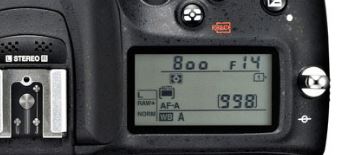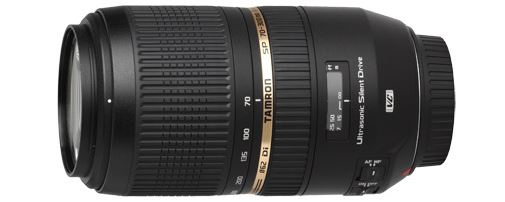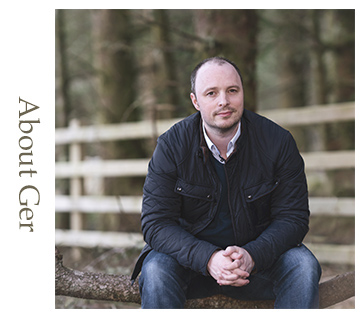Choosing your first Digital SLR or Mirrorless camera body and Lens - What & Where to buy
The perfect gift for someone looking to improve their camera skills with a beginners photography course - offer expires Friday 23rd Nov at midnight - order details available here
Updated: Dec 2019 - I get a lot of questions from people starting out in photography about DSLR or Mirrorless camera & lenses purchasing, so here is my guide for those of you looking to get some good camera gear to start out with.
What to spend money on – the camera body or lenses?
A good camera will cost anything from €300 up to €3000 and beyond. Camera lenses range from about €100 to an average of €2000 for professional series lenses.
In a nutshell, to get the best image quality, spend your money on good lenses (also known as glass). This can also be a good investment of your money as you upgrade your camera body over time, ( a camera body is just the main camera with no lens attached ) you may always hold onto and reuse your good lenses. For a details guide on camera lenses, check out my "Introduction to camera lenses" guide.


DSLR Purchasing Options - buying a DSLR camera
The camera I recommend for beginners is the Nikon D3500, previous to this I recommended the Nikon D3400 which was the previous version. The Canon 200D & 1300D are also very popular cameras at my workshops, and they are a joy to use also.
Normally, I don't buy camera gear from camera shops or electrical stores as there is much better value when purchasing online. I buy the majority of my camera equipment from Conns Cameras in Dublin, Bermingham Cameras in Dublin or "Amazon dot co dot uk" or and I find they have good value for money. Argos.ie also has good value if you can find the camera you are looking for. Conns cameras & Bermingham Cameras is based in Dublin so you can visit their store also. Their delivery service is always fast and reliable. I shoot with Nikon & Sony cameras, I used to shoot with Canon, both Nikon & Canon have excellent equipment so I would recommend either brand. Sony & Fuji also provide excellent camera options.
Please note: When price shopping for your camera, if you see a deal online that is too good to be true or is significantly less expensive than other retailors, it should raise a red flag. Taking an example (updated:Dec 2019), currently the Nikon D3500 with kit lens is €479 at connscameras.ie. The same camera can be as low as €339 elsewhere on non EU websites. Why the big price difference? Well, the camera at lower priced camera is NOT an EU model, it is shipped from China. Thus it is not covered under EU warranty. Should you have an issue with the camera under the warranty period, Nikon Europe will not touch the camera. Should you have an issue after the warranty period and the camera requires a paid for repair, Nikon EU will also not touch the camera. My advice is to pay the EU price and have peace of mind. It will also make selling the camera down the line easier, as people do not like purchasing non EU cameras for the reasons above. A non EU camera is known as a "grey import".
The Nikon D3500 is available for pre order at Conns Cameras in Dublin with next day shipping - https://www.connscameras.ie/p/nikon-d3500/p-4960759150134
You'll also need a memory card for the camera, I recommend the Sandisk brand, a 32GB SD card is ideal for this camera - https://berminghamcameras.ie/sandisk-extreme-pro-sdxc-uhs-i-c10-u3-32gb.html
Recommended Digital Cameras for beginners/intermediates
When looking to purchase your first DSLR or Mirrorless camera, there is a bewildering variety of options available on the market. Below I list some entry/mid-range cameras that I recommend for beginners/intermediates along with some online resources which will help you compare one camera against another. Mirrorless cameras are very popular right now & I'll explain how those compare to a DSLR camera later in this guide. Mirrorless cameras as typically smaller than DSLR cameras, have the benefit of also being able to swap lenses & use an EVF or electronic View Finder which allows you to see the final image on the LCD screen before the image is taken, much like your smartphone. However, they are quite expensive and starting out, I think a DSLR camera is a much more affordable option.
What to look for when buying a new Camera
What are the main and important differences between camera bodies?
Menu item vs button access for common settings
Typically, some of the more common DSLR setting that we change often including ISO, metering & focusing modes etc are located within a menu item in lower end cameras and are available as quick access buttons on more expensive cameras. Having these freatures as buttom items allows the user to change these settings easier if used on a regular bases. For me, having a button to control your ISO level as opposed to having to enter the menu system to change it is a big advantage. ISO is one of the camera features that you should be changing a lot.

Noise Levels
Image noise of grain in your image is an unwanted side effect of using a high ISO value. Often we are required to use a high ISO value when taking photos in areas with relatively low light levels. Choosing a camera that handles noise at high ISO levels would be a very important factor in my opinion. In a nutshell, some cameras handle high ISO noise better than others which results in better overall image quality. Typically at the entry level range of cameras, Nikon cameras perform better than Canon cameras in terms of how they handle image noise and typically produce better quality images.
Image Quality
Image quality is very good on all modern DSLR cameras and as you'll see when we review lenses below, image quality is achieved mainly by using better lenses as opposed to being too important in camera bodies.
Top Panel LCD
Moving towards the mid to high end cameras, they will have a top panel LCD screen to quickly show you what your camera settings are at any given time. This is a handy way to view your setting as opposed to having to look at the rear LCD screen or through the view finder.
Flip out LCD screen
Having a flip out screen is a very handy feature to have on your camera, it makes it easier to shoot from low down & high up while still being able to review your image on the back of the screen. Canon seem to be ahead of Nikon in this reqard and have flip out screens on a wider range of DSLR cameras.
Recommended DSLR cameras
For an entry level Nikon camera body I would recommend the Nikon D3400 or Nikon D3500. If your budget goes up from there, I'd recommend a Nikon D7000 or Nikon D7100 camera. On the Canon side, the Canon 600D or Canon 60D are good cameras. Canon have just released the 70D which is on par with the Nikon 7100 but it's quite pricy at the moment. These cameras also come with a standard 18-55mm kit lens. Note: You do not have to purchase a camera with the kit lens, when buying a camera online, you have the option to buy the camera body only, i.e. just the camera itself, and purchase another non kit lens separately if desired. The kit lens is your standard walkaround lens which normally zooms from a fairly wide angle of 18mm to a medium zoom level of 50mm/55mm.
Choosing lenses for your DSLR camera
I'm going to focus more on lens selection here as I feel it presents more questions for beginners than camera selection. Some lenses are general purpose lenses for travel & hobbyist etc, other lenses are more specific, e.g. sports, low light & wide angle etc. The first thing to do when deciding on which lens to buy is identify the main purpose for which you will use the lens. Once you know what the lens will be mainly used for, you can narrow down your search online.
When buying a new Digital SLR camera, they normally come with a kit lens. A kit lens is a "starter" lens which is generally an inexpensive lens priced at the lowest end of the manufacturer's range so as to not add much to a camera kit's price. It mainly useful as a walkabout or landscape lens but it's not much use indoors without using flash. This is due to it's small variable aperture value, typically between f3.5 & f5.6 which varies as the lens zooms.
Telephoto (Long Zoom) Lenses
The majority of people who come to my "Fundamentals of Digital Photography" workshops bring along a kit lens & a telephoto zoom lens. The telephoto (long zoom) lens is a very underestimated lens. it's often thought that it's primary use is to get close to a far away subject but a telephoto lens does so much more than that. A telephoto lens, by it's long zoom nature, enables a shallow depth of field in your images, i.e. blurry backgrounds in your images, and will generally result in more flattering portrait images. Telephoto lens are often used as portrait lens due to their ability to defocus or blur image backgrounds.
Both Nikon & Canon provide good entry level telephoto lenses but the better option which is optically superior is the Tamron 70-300mm VC version, available on amazon dot co dot uk, available in both Nikon & Canon mounts. In order words, the Canon mount version can be used on Canon cameras and the Nikon mount version can be used on Nikon cameras. It also has superb VC, Vibration Compensation. It can be difficult to describe lenses without using technical jargon like aperture & VC etc but all these features are explained in detail in my photography workshops if you would like to learn more.
Recommended Telephoto Zoom lens - Tamron 70-300mm f/4-5.6 Di VC USD (Available for both Nikon & Canon DSLR cameras)
Prime Lenses (Also known as fast glass)
Certainly my favourite type of lenses to use are prime lenses. A prime lens is a lens which does not zoom, as the saying goes, if you need to zoom with a prime lens, you zoom with your feet to get closer/further away from your subject. They are normally smaller & lighter than zoom lens as less space in required inside the lens body for zoom elements. This extra space is used to allow for a larger aperture or macro function. Prime lenses come in a number of focal lenghts, typically 35mm, 50mm, 85mm, 105mm, 135mm or 200mm with large apertures like f1.4 & f1.8. These large apertures allow extra light in through the lens to the camera sensor allowing images to be taken in low light like candle light etc. They also allow for a very shallow depth of field so it's easy to drop backgrounds out of focus. Both Canon & Nikon provide quite inexpensive prime lenses starting out with the Canon 50mm f1.8 & the Nikon 35mm f.18 lens. Sigma have a new 35mm f1.4 Art Series lens available right now which is truely stunning lens should you wish to treat yourself!

Attendee feedback from a workshop
I attended the 1 day group workshop with Gerard on Sat Mar 21st, and thoroughly enjoyed the class. Ger's theory and practical presentations and demonstrations were very professional and not at all intimidating for a beginner. Ger's love and flare for photography really comes across during his lesson and is a real inspiration to a beginner to DSLR photography like me. Thanks Ger for an excellent lesson!
Helen Cusack - March 2015 Workshop
Tip: To see what kind of images others are taking with a lens you plan to buy, you may check out flickr dot com and search for groups. Enter the name of the lens you are thinking about buying into the group search to find a group of images taken with that specific lens.
For buying advice, feel free to get in touch with me at [email protected] should you need any clarification on any of the above or you just want to bounce a camera / lens purchase question of me.
 Contact Gerard via at [email protected] or 0872295675, or book a photography course online .
Contact Gerard via at [email protected] or 0872295675, or book a photography course online . 




